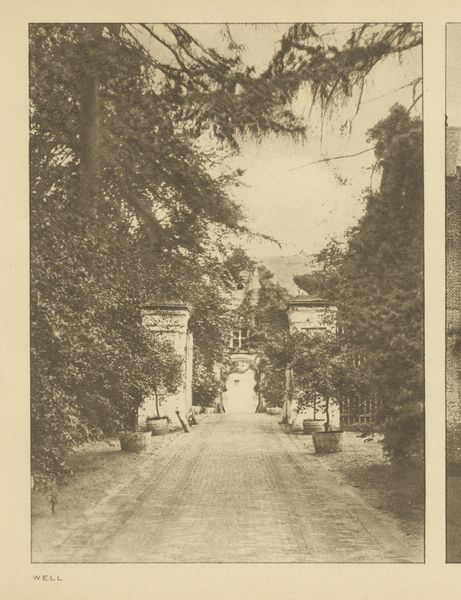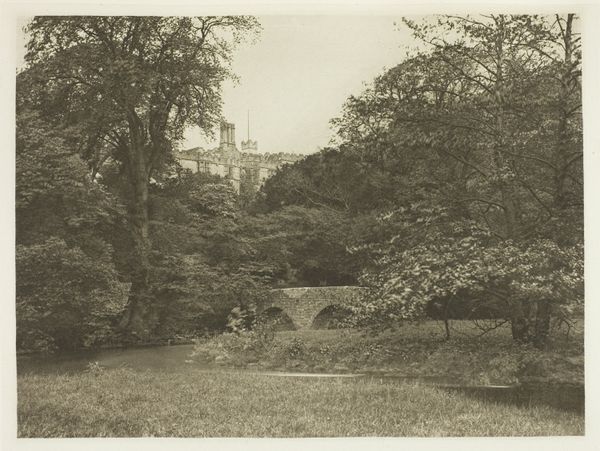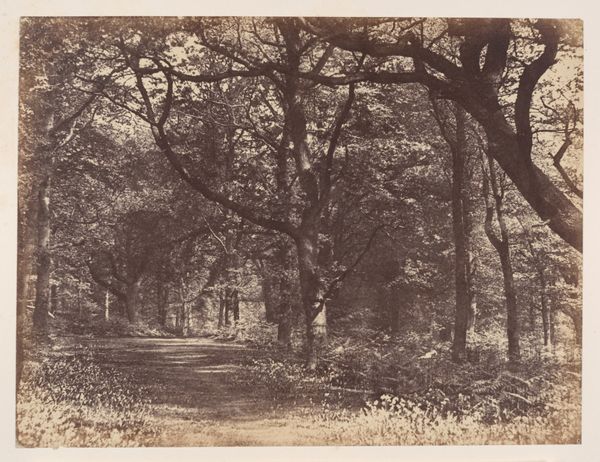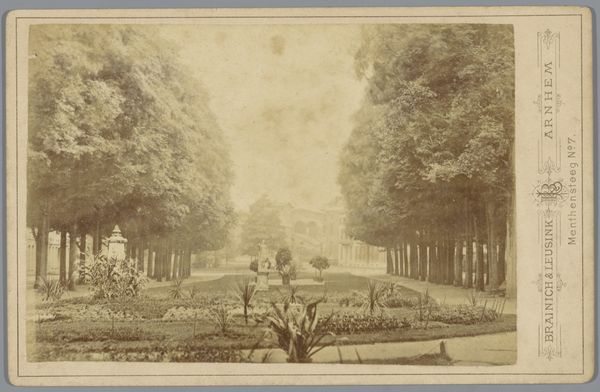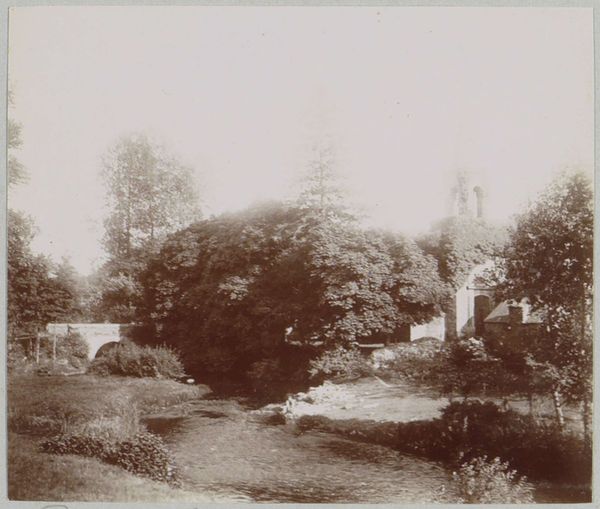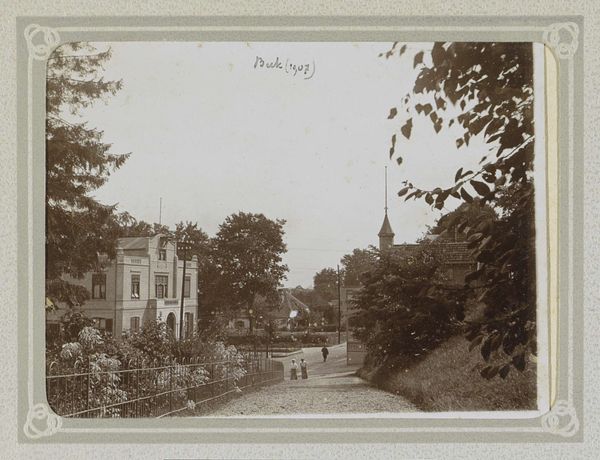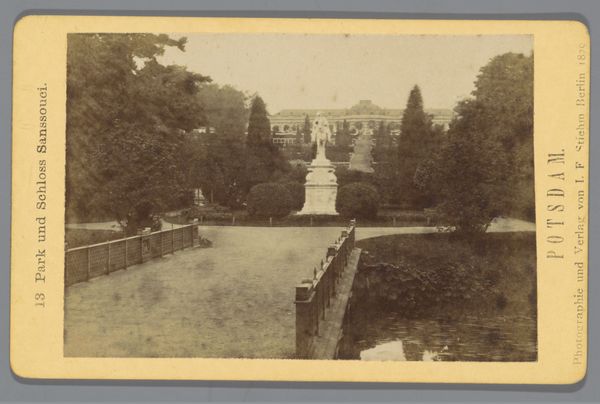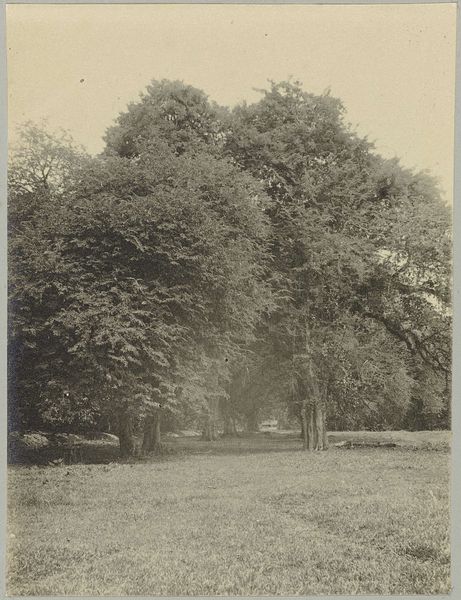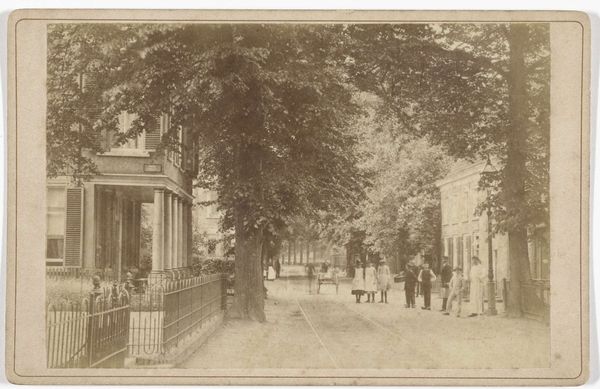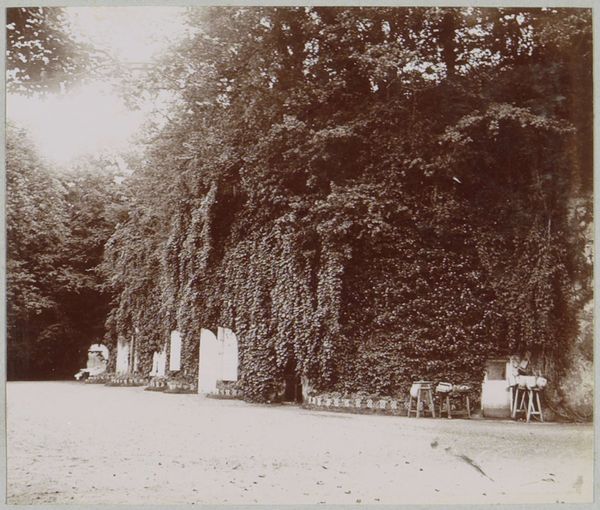
photography, site-specific
#
still-life-photography
#
landscape
#
photography
#
site-specific
#
realism
Dimensions: height 160 mm, width 240 mm
Copyright: Rijks Museum: Open Domain
Curator: This photograph captures Gezicht op Kasteel Biljoen in Velp, Gelderland, and predates 1915. Its author remains anonymous. Editor: There's such starkness. The long road leading directly to the building almost pierces the space—creating an unsettling, alienating effect despite its ostensible representation of 'home'. Curator: It’s interesting you interpret it that way, because, compositionally, it is exceptionally balanced. The symmetrical framing of the trees and ornate urns in the foreground offer the eye a direct path to the castle, creating a harmonious perspective. Editor: Harmonious, perhaps for whom? The image whispers of histories of privilege and exclusion. The castle, bathed in muted sepia tones, stands as a symbol of power, seemingly aloof from the world outside its manicured grounds. This image implicitly celebrates a hierarchy, one where some have access to serene beauty and others don't. Curator: The use of sepia definitely lends a certain weight to the image, and contributes to the feeling that we are seeing a carefully constructed reality. But the composition is the focal point, as are the subtle tonal gradations throughout—from the darker foliage at the sides to the pale sky visible just above the rooftop. I am also drawn to how the eye circles between urn, branch, rooftop, urn and branch, trapped into an artful and continuous closed loop of form. Editor: And what does it exclude? These meticulously arranged vistas reinforce notions of control, property, and an inherently unequal distribution of space. Even these seemingly innocuous visual elements—those urns, for instance—symbolize wealth and aristocratic tastes. The artist, whomever they may be, deliberately composes a scene that normalizes these imbalances, right? Curator: Perhaps. It’s equally fair to say that it presents us with the artist's vision, and asks us to consider how photography can translate space onto a 2D surface, a question of geometric organization and visual design that requires rigorous examination of its formal qualities, first and foremost. Editor: Form can also perpetuate ideology. Thanks to this dialogue, I'll definitely be thinking about who has historically been able to afford themselves such picture-perfect moments. Curator: As will I, along with reflecting upon its artistic composition—specifically, the implied triangle constructed between the urns and the castle rooftop, and how it effectively concentrates attention.
Comments
No comments
Be the first to comment and join the conversation on the ultimate creative platform.
